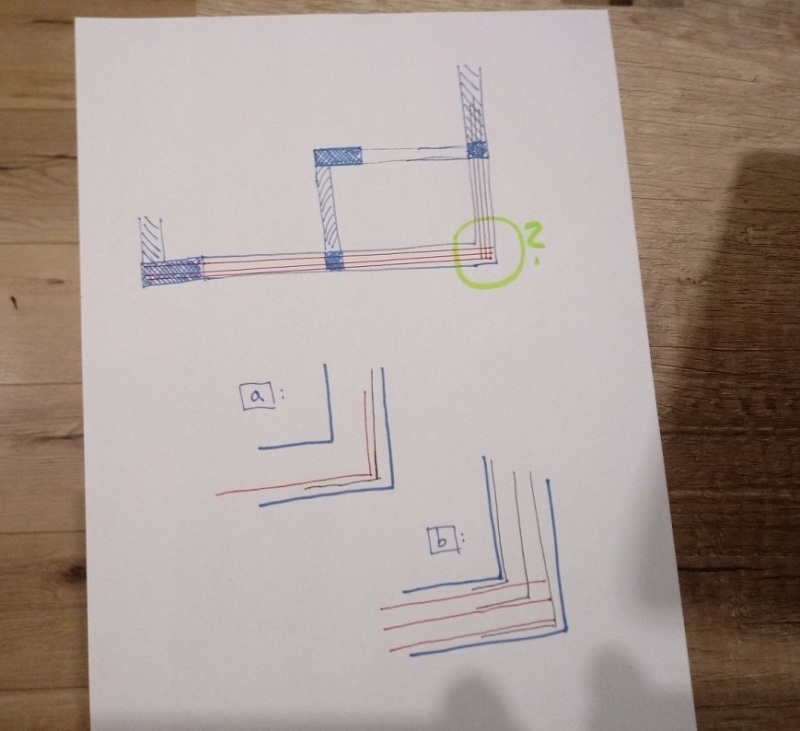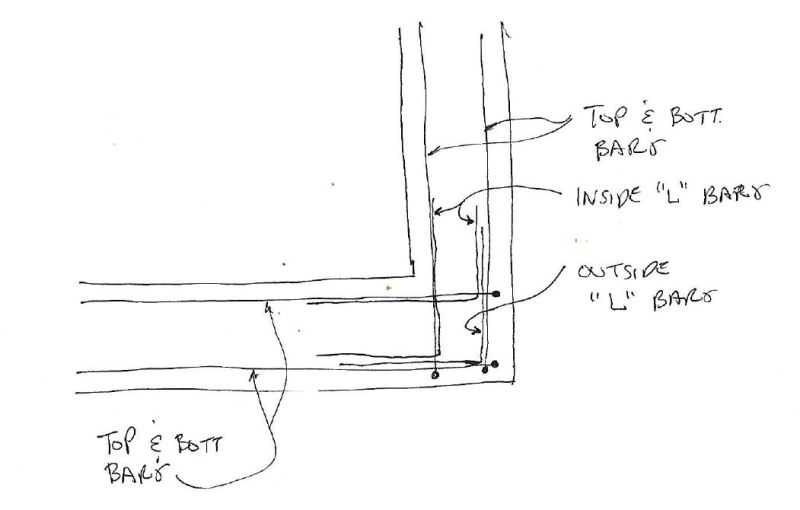I don't believe that any bars should be provided that "round the bend" so to speak. No plan hooks, no L-bars. To justify my position -- or at least try to -- I go back to the fundamentals of joint detailing and the things that I believe to be most important about the detailing of this particular joint.
1) At the end of any flexural member, the primary goal is almost always to connect the tension force in the flexural rebar to the compression block in the concrete within the same beam. As such, I very much agree with JAE that the top bars ought to be extended as far as possible and hooked downwards for both beams. I see no demand for rebar tensions to be transferred, or anchored, around the bend. In fact, in the absence of the adjacent slab, any "around the bend" rebar would tend to promote unrestrained concrete struts and therefore represent poor detailing.
2) Congestion should be minimized. In most concrete joints, the thing in shortest supply is... concrete. This will be a busy joint that won't be much fun to assemble. I would encourage the removal of any extraneous reinforcement in the interest of promoting simplicity and well consolidated concrete. This partially informs my recommendation to omit L-bars and any plan hooks.
3) Shear transfer. This will be the most important aspect of this joint. Presumably, the shorter cantilever will hold up the longer cantilever. As such, you'll likely want the stirrups of the supporting beam to run through the joint and perhaps be tightly spaced in that area to provide the necessary "hanger" bars for the supported beam. Minimizing congestion, as described in item two, will facilitate success in this department.
I like to debate structural engineering theory -- a lot. If I challenge you on something, know that I'm doing so because I respect your opinion enough to either change it or adopt it.





